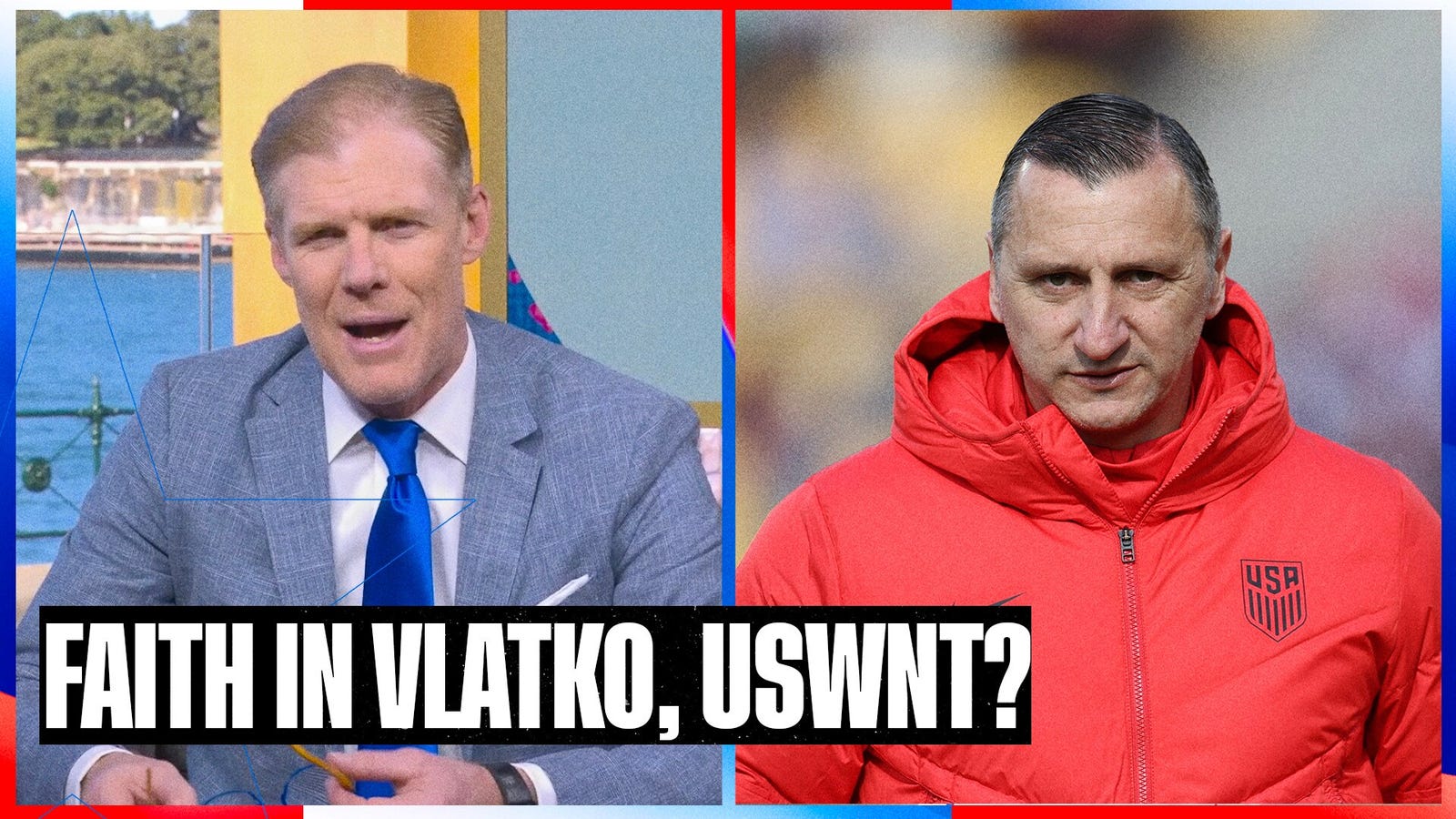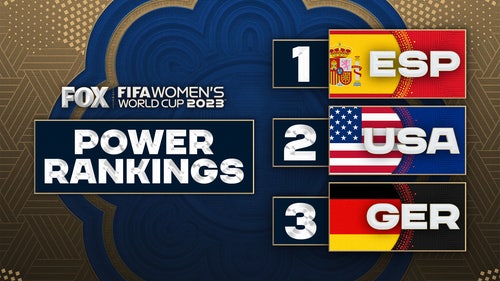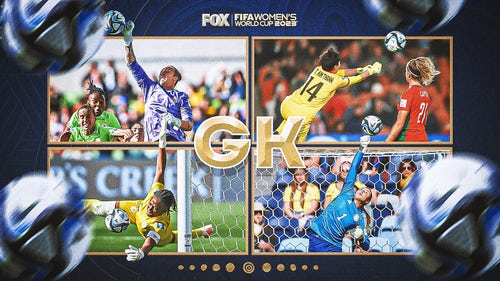Martin Rogers
FOX Sports Insider
There might come a point when it’s time to criticize United States women’s national team coach Vlatko Andonovski. But it’s not now.
Andonovski came under fire following the USA’s 1-1 with the Netherlands in the Women’s World Cup on Wednesday, with no shortage of critics unimpressed with the stuttering start to the game before captain Lindsey Horan’s second-half goal pulled things back to level.
More than anything, however, there was a sense of bewilderment at why he decided against using his stacked group of substitute options, with the sole exception of Rose Lavelle’s halftime introduction in place of Savannah DeMelo.
[World Cup Power rankings: No room for error for USA, others]
ADVERTISEMENT
The past few days have brought a predictable round of second-guessing.
Former national team players have been swift and forthright in making a case as to why the power of Lynn Williams, or the experience of Megan Rapinoe, or the effervescence of Alyssa Thompson were not drafted into action to close out the game in Wellington, New Zealand.
Injured World Cup veteran Tobin Heath, speaking on her podcast, “The RE-CAP Show: World Cup Edition,” was insistent that bringing on Williams to replace Trinity Rodman could have paid dividends.
“I think if you have a fresh Lynn Williams breaking through, there’s a different result,” Heath said, referring to a late Rodman opportunity that the Netherlands survived.
[Megan Rapinoe went from star to sub for USWNT, but she’s not sweating it]
On social media, the consistent theme posited that because certain players looked tired, bringing on someone fresh would have been a smarter move than merely doubling down on the personnel Andonovski had on the field.
Except, as ever, there is more to it than that.
First, it is important to consider that just as much as an international coach should be judged on his or her preparation, even more important is their capacity for adaptation.
Just because Andonovski did not press the panic button, rip up the script and throw on a bunch of replacements does not mean he was unreactive to what was an inspired Dutch game plan.
Things got drastically better in the second half. They had to. The opening 45 minutes was a big orange party. The USA couldn’t get on the ball and when they did, they couldn’t keep it. The USWNT was outmaneuvered and overpowered and fell behind after Jill Roord’s fine strike. But Andonovski didn’t panic.
For all the headlines about Horan’s timely goal and on-field aggravation with Danielle van de Donk, the midfield star had suffered through a largely miserable time against Roord and young phenom Esmee Brugts in the early running, while Crystal Dunn was given a rugged time by Viktoria Pelova.
Andonovski fixed that, not with a shift in formation or a wholesale change of personnel, but with small and intricate tweaks in the positioning and coverage schemes. The coach and his staff figured it out.
The Dutch midfield lineup looked like world-beaters in the first half but by the end of the second were nowhere near as effective, and were being forced into defensive duties as the USA found its own ways to press.
As for the viability of fresh legs in attack, that’s up for debate. And let’s face it, debate is part of the fun of watching soccer.
One key thing to remember is that the penalty for losing the Netherlands game was far greater than the potential benefit of winning it. The eventual result of a draw was a perfectly fine outcome and kept the campaign firmly on track.
In a game that was likely to be decided by single flashes of inspiration, Andonovski stuck with the trio of attackers — Alex Morgan, Rodman and Sophia Smith — that he felt most likely to provide those flashes.
“I just didn’t want to disrupt the rhythm at that point because sometimes a substitute comes in and it might take a minute or two to get into a rhythm,” Andonovski told reporters. “We just didn’t want to jeopardize anything.”
Furthermore, the opposition’s five-player midfield had layers to it. To describe the method used by Holland coach Andries Jonker as simply plugging up the midfield is to do the Dutch side a drastic disservice. There were swings and variations in the way they advanced. By the end, the likes of Andi Sullivan and Horan were in tune with what was happening, and so were the USA attackers who provided the outlet once the ball was won.
Sure, switching that up could have had a stunningly positive effect. Or, it could have taken the figure-it-out process back to square one.
For whatever reason, there seems to be a distinct unwillingness from large sections of the fan base to give Andonovski any kind of credit. When the USWNT thrives, it is because the players are brilliant. When they lose (or even draw), it is because the coach is clueless.
Such has been the public skepticism at times over the past few days. You could have been forgiven for thinking that the squad was sitting closer to the bottom of Group E, rather than at the top of it, ahead of the Dutch on goal differential by a margin of +2.
It is a results business, and the Americans have been the blue-chip exponents of that industry for longer than anyone cares to remember. Don’t let your mind fool you. All those past triumphs didn’t come on the back of constant, non-stop domination. There were bumps in the road. There weren’t many of them in 2019, but there sure as heck were in 2015 when the 5-2 final glory march against Japan in Vancouver came a couple of weeks after a mini-crisis and a pair of disjointed group performances.
Andonovski and his team, plus his strategy and capacity for acting on the fly, have been tested. And while he didn’t overwhelmingly ace the test, he certainly passed it.
Had Alex Morgan been able to stay onside before putting the ball in the net on 67 minutes, the narrative might have been that Andonovski was a genius for his halftime adjustments.
America’s soccer fan base is an ever-growing one, the increases coming in both the number of followers and also the passion that is on display. That, obviously, is an outstandingly positive development for the sport.
But there are times when nuance is lost and when everyone thinks they know the team best, better than the guy who spends all his time with them.
Part of the privilege of being a sports fan is the liberty to criticize the coach. Some, more than others, are drawn to it like catnip. If that’s the case, be patient.
[Can Portugal stun USA?: ‘We believe, and we’re going to do it’]
If the USA puts in anything other than a comprehensive display and a comfortable victory against Portugal on Tuesday (coverage begins at 1 a.m. ET, with kickoff at 3 a.m. ET on FOX and the FOX Sports app), have at it. If the campaign ends far short of expectations with the kind of early exit this team is not used to, it’s fair game. It’s sports, that’s how it works.
For now, though, let’s see if there is a possible version of what went down against the Netherlands other than “Andonovski messed up.”
Give it time — just a little time — and a viewpoint that isn’t particularly popular or trendy might turn out to be the accurate one. That the coach, believe it or not, knows exactly what he is doing.
Martin Rogers is a columnist for FOX Sports and the author of the FOX Sports Insider newsletter. Follow him on Twitter @MRogersFOX and subscribe to the daily newsletter.
FIFA WORLD CUP WOMEN trending

Get more from FIFA Women’s World Cup Follow your favorites to get information about games, news and more























